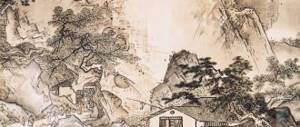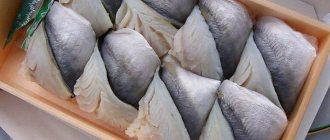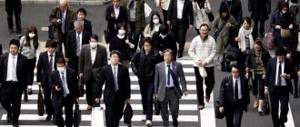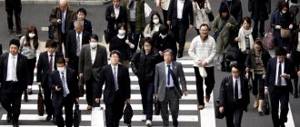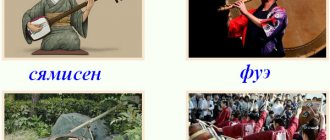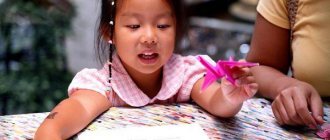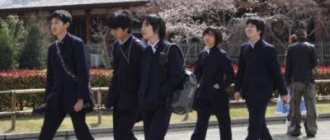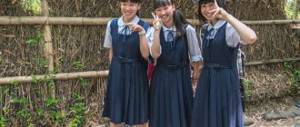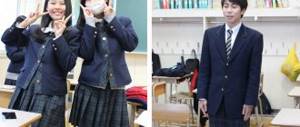Recently, in the USA, Europe and Russia, interest in Eastern (in particular, Japanese) culture, and, first of all, in Eastern life and the peculiarities of relationships, has become very widespread. Many Russian mothers began to pay attention to Japanese educational methods and apply them in their families. The Japanese education system, which certainly has both advantages and some disadvantages, is quite unique and its principles are not always understandable to people with a different mentality.
Japanese kindergarten.
Nursery (保育園) vs Kindergarten (幼稚園)
The terms 幼稚園 (yochien) and 保育園 (hoiken) are used interchangeably, but in Japan they are fundamentally different institutions.
In fact, understanding the difference confuses even Japanese parents at first. We'll just look at the differences before diving into kindergarten life, school schedules, materials, textbooks and fees.
Let's start by looking at the main differences between preschools and kindergartens in Japan.
Nursery-kindergarten (保育園)
Nursery school is hoikuen (保育園) in Japanese. This is for babies (yes) from 56 days to children 6 years old.
Hoikuen is sometimes translated into Russian as “nursery,” despite the fact that the Japanese version implies a completely different reality. Children from zero to six years old go to Hoikuen. Teachers look after them. Children play, sing songs, sleep during quiet hours, but... are not at all engaged in any study or preparation for school.
The day care center is under the auspices of the Ministry of Health, Labor and Welfare (MHLW), which issues the day care worker license (保育士 | houkushi).
The main purpose of day care centers in Japan is to provide a safe and nurturing environment for infants and children while their primary caregiver is at work.
No educational program, only quality supervision from morning until late evening. Sometimes educators can, on their own initiative, teach children to read and write, but this is quite rare.
Meals are provided (at most locations) and children develop language and social skills through interactions with friends, as well as gross and fine motor skills through play.
Daycare is a great option if you are a working parent.
Kindergartens in Japan are open from Monday to Friday, sometimes on Saturdays, depending on location. Some daycare centers operate 24 hours a day or overnight to accommodate parents who are working second or third shifts. Other day care centers offer respite care "as needed" (一時保育 | ichiji hoiku).
Why are young children in Japan so independent?
To place a child in an approved hoikuen, parents must document that they are unable to care for the child during the day for valid reasons (for example, both parents work, or one parent is unable to work due to illness). Here a vicious circle arises for those who are looking for work: if a woman (or man) with a child has not yet been able to find a job, her child will not be given a place in the hoikuen. And if you can’t leave your child with someone, then it’s impossible to work.
According to the Ministry of People's Welfare and Labor, as of April 1, 2014 (in Japan, the fiscal year begins on April 1), there were more than 21 thousand "waiting children" (taiki jidō) registered in the country who were denied admission to the sanctioned hoikuen. However, the "expecting children" category does not include all the babies whose parents wanted but were unable to obtain a place in a sanctioned hoikuen. For example, if a child goes to an unauthorized hoikuen, or the mother was forced to extend maternity leave, such children are removed from the “waiting” list. Therefore, it is assumed that the actual demand for sanctioned hoikuen is much greater than the official data. In the meantime, there is a fierce struggle for every free place.
The various factors that justify sending a child to hoikuen are scored, and the one with the highest points is put first in line. First of all, these points depend on the number of working days and working hours of both parents. If the child already goes to an unauthorized hoikuen, they are given extra points. If several applicants have the same number of points, preference is given to families with lower incomes. Of course, parents come up with all sorts of ways to score more points.
Kindergarten (幼稚園)
What exactly can a kindergarten in Japan offer?
In Japan, children attend kindergarten between the ages of 3 and 6 years. The Japanese Ministry of Education does not really monitor the issue of catering, and kindergartens set their own rules. In many kindergartens, parents are required to independently prepare set lunches for their children in boxes (Japanese: bento). The main ingredients of a bento are usually rice, fried eggs, sausages and several types of vegetables (less often fruits). Dairy products are usually not included in such lunches.
Kindergarten is exclusively for children from 3 years old to first grade.
The kindergarten is run by the Ministry of Education (MEXT) and aims to prepare children for grade one and beyond. This is achieved through academic programs, English language lessons, as well as music and physical education lessons according to the standards set by MEXT.
Yochien is less of a kindergarten and more of an educational institution where children are prepared for school.
In Japan, there are both private but government-approved, completely private, and public kindergartens, which are further classified as "approved" (認可 | ninka) and "unauthorized" (無認可 | muninka).
You might be wondering how the hell an “unauthorized” school can operate?
MEXT and MHLW set standards for kindergartens and nurseries. This includes student-teacher ratio, room size, lunch menu, and so on.
“Unauthorized” in this case could mean a school below state standards; a training model without any special problems; or simply a different lunch menu than the one set by local authorities. "International" kindergartens generally fall into the muninka category.
An unauthorized hoikuen may be located on the second to fifth floor of a small office building, cafe, or store. More than 20 children, ranging in age from 2 months to 3 years, play, eat and sleep in one large room separated by partitions. In good weather, children with teachers can walk in public parks. Not everyone has this opportunity. Conditions in a sanctioned hoikuen are much better: they are usually on the ground floor of a high-rise apartment building, provided with gyms and swimming pool areas, and each age group occupies a separate room.
This is the main difference between a nursery school and a kindergarten. So, let's take a look at kindergarten in Japan from the inside!
This section will look at "Japanese" private and public kindergartens, not international kindergartens.
About school
At school, teachers rarely raise their voices, but they manage to maintain discipline in a completely unobtrusive manner. Instead of shouting, they use pictures to explain the rules of behavior to children. But they don’t write: “You must!” Instead, for example, they draw some kind of sparrow, which either opens its beak or closes it. And the meaning is this: when recess begins, we talk, and during the lesson we close our beaks. It seems like an ordinary picture, but it has a better effect on children than any threats or shouting. And it turns out that the children themselves love and observe discipline.
Russian mothers complain that Japanese education is superficial. Indeed, teachers do not provide comprehensive information on every topic. Their teaching system is reminiscent of lecture classes at a university: there are theses, there is a lecture, and then you study the subject on your own. It’s the same in Japanese schools: they believe that they provide the necessary minimum, and then you can take books and delve into a topic that interests you. When I, for example, studied at a Russian school, I dreamed of the kind of education that exists in Japan. If a Japanese person is hooked on something, he will carry this passion throughout his life. They even take their hobbies almost to the level of professionalism. And education is designed specifically for such people.
Kindergarten from the inside
A typical day in kindergarten starts around 9-10 am and ends around 2 or 3 pm. This short schedule makes it incredibly difficult for full-time working parents to balance work and child care. This is a very broad generalization, but it is expected that children have a grandmother or mother who works part-time.
Some kindergartens, along with preparing for school, offer "extracurricular" services (保育| hoiku), such as swimming, dancing, martial arts, English, etc. Be aware, spaces are limited and fill up very quickly.
According to the rules, for children under one year of age, there should be one teacher for a maximum of three children. From one to two years - one teacher for six children, from three to four - one teacher for 20 children and over four - one teacher for 30 children.
Thus, with a large number of children, a large number of teachers are needed. However, the salary of educators in Japan is considered very low (100,000 yen), so fewer and fewer people are entering this profession. As a result, low-quality specialists and hidden perverts begin to be hired as teachers, which, of course, negatively affects the quality of the services provided by the kindergarten.
Public kindergarten
- Managed by local administrative government
- 2-year program (for children from 4 years old)
- The average tuition fee is 223,364 yen per year.
- Children travel with their parents
- The curriculum is focused on the child's autonomy and independence
Private kindergarten
- Operated by educational institutions or social welfare corporations.
- 3-year program (for children from 3 years old)
- The average tuition fee is 527,916 yen per year.
- Children ride a school bus
- The curriculum is focused on education
1000 yen = 705 rubles.
Costs for hoikuen usually range from 15 to 30 thousand yen per month, depending on the age of the child (the older the child, the cheaper the kindergarten fee). Yotiens are either public (cheap) or private (more expensive). Tuition prices usually range from 25 to 60 thousand yen per month.
For being late, the fine is approximately the same: 400-500 yen per half hour (a delay of 1-5 minutes is already taken into account using the electronic key).
Japanese primary school teachers are accused of corrupting children. 16+
Early development methods
In Japan, centuries-old educational traditions harmoniously coexist with advanced educational technologies. The most popular methods among Japanese parents and teachers are the following:
- Shichida technique. According to the ideas of Professor Makato Shichida, until the age of three, the right hemisphere of the brain, responsible for long-term memory, is in the lead in children, and later the left hemisphere begins to dominate. Therefore, up to a certain age, it is necessary to help the child develop his right hemisphere. Tasks in the Shichida method allow you to reveal your child’s creative abilities, develop his intuition and imagination.
- Ibuka technique. Masaru Ibuka argued that up to the age of three, the most active formation of neurons and connections between them occurs, so parents should raise their child from birth: teach him foreign languages, instill an interest in classical music, and engage in creativity together.
- Kumon technique. Toru Kumon proposed a system thanks to which a child will be able, gradually moving from simple tasks to more complex ones, to independently cope with any tasks.
However, no matter which of these methods Japanese parents choose, they will always believe in the strength of their child and encourage his endeavors.
Get into kindergarten
Just like nursery school, getting into a kindergarten in Japan can be challenging, especially if you have your eye on a prestigious private institution. And just like nurseries, kindergartens hold information sessions in October, accept applications in November, and publish results in December.
Family "interviews" or an individual interview with your child may be part of this process
Highly competitive schools may ask you to attend several information sessions and interviews.
These interviews consist of questions about your parenting style and family life. Questions for your child include: “What is your name? How old are you? What's your favorite color? "
Teachers may be curious to know if your child knows the Hiragana alphabet, knows the types of plants and animals, or if he can take care of himself.
There is an "informal" dress code for these events, which is one step above a funeral and a step down from the entry ceremony. Check out what parents (mostly moms) should wear!
Lunch according to the charter
Parenting began with “obento” - a lunch box that every mother should prepare for her child in the morning. It turned out that the contents of my box did not meet the requirements.
“Lunch should be prepared from 24 types of products, the rice should not fall apart, but be sticky,” the manager explained to me. - And colored potatoes (in our opinion - beets) are harmful to health.
After several of my unsuccessful experiences with cooking, I was invited to study at the house of one exemplary mother, where the parents of all the children of our small (23 children and 3 teachers) kindergarten gathered.
“Herring stewed with sake is economical,” they explained to me during the lesson. — Gobo (an edible root) is healthy, and hijiki (a type of seaweed) is tasty.
“Laboratory work” was also carried out here - an “obento”, completed in accordance with all the rules of the “mother’s” regulations, appeared on the table. And although I realized with horror that, no matter how hard I wanted, I couldn’t eat or cook it all, and asked for an individual diet, all my requests were met with a laconic military answer: “You need to eat everything.”
It was useless to object, as I later became convinced: in Japan it is customary to live according to the rules of the group. For housewives, the “mother’s” team is the group whose charter must be unquestioningly obeyed. If you don't like it, leave. Naturally, together with the child.
Attempts to make words here do not work. As a result of long shopping trips, I compiled my daughter’s “obento” from purchased foods. And although they fully complied with the regulations, my daughter (in front of all the children) and me (on the arrival of the bus with children at my house) were told: “If a mother does not prepare food for her child with her own hands, it means that she does not love him.”
Diapers, toilet training and kindergarten
If you're applying for a 3-year-old kindergarten (年少 | Nensho) class, you may be wondering whether your child needs to be toilet trained before he or she starts kindergarten in April.
Some daycare centers require that children be potty trained before their first day at the facility. In this case, once you are approved, you can begin potty training your child.
Don't forget to add extra pairs of pants to your child's spare outfit. If they come home with dirty clothes, send a new set the next day.
Every day you fill out a special book: recording the body temperature, what kind of chair the child has and his mood and put your personal stamp as a parent. You can also write messages to teachers there, if necessary.
Used diapers cannot be thrown away in the kindergarten; they must be taken home.
“Singing” for mothers
All my “friends” in kindergarten were an indispensable help to me. They taught me how to sit in Japanese, choose the right kimono and, most importantly, how to behave in a group.
“You can’t just say ‘no,’” one of them instructed me. - Stick to the “no-no-yes” formula. When saying “no”, always smile: firstly, because we Japanese see first and then hear, and secondly, a serious “no” is considered very impolite here.
However, at meetings they again became members of the “mother’s” team, and I always had the feeling that they were embarrassed to “give away” our friendly relationship with them. However, the meetings were not inclined to do this.
At the only scheduled meeting that I sat through to the end, I simply had nothing to say. The agenda included questions about obento and how to brush children's teeth. The reports and co-reports on these two issues lasted more than three hours. Then the mothers sat in a semicircle, and the chairwoman, sitting opposite, moved on to the question of children's books. She read aloud with expression one of the educational essays about how what was eaten by different animals returns to nature. At the end of the reading, everyone burst into thunderous applause: now it is clear how to read to a child. Not understanding what was causing such delight, I did not clap with everyone. And then my mother, who was sitting next to me, took me by the wrists and patted my hands - so that she would join the team.
— By the way, have you already received the texts of the children's songs that we will sing at the next meeting? - my friends asked me.
However, I refused the “rehearsal”. Having attended the meeting, I seemed to say one “yes” to the team, and now I had two “nos” left in stock.
What your child needs for kindergarten in Japan: shopping list
Please check with your child's day care center for specifics before purchasing any of the following. They might have a rule against branded items or a request for a certain style of house shoes (like Velcro straps instead of slip-ons). All items are affiliated with Amazon Japan.
You'll need:
- Cleaning wipes. You will be asked to send 1 to 5 zoukin (雑巾) and these will be used to clean your child's classroom.
2. Water Bottle (with Strap) This style of water bottle is very popular. I prefer them over those with a complicated latch or cup. I seem to have a lot of injuries related to full stainless steel bottles, so I would recommend holding off on larger bottles until your baby is older. Tip: The O-ring must be removed and cleaned daily!
3. Lunch box. I recommend that you avoid those that close with a stripe or are two-tiered. Instead, choose a bento box with pull tabs like this one. Just like a water bottle, the seal ring on the Bento box needs to be removed and cleaned daily! You won't believe how easily mold grows on it!
4. Set of cutlery. Depending on your child's age, the preschool may ask you to leave chopsticks at home.
5. Chopsticks
It's always a good idea to invest in a pair of practical chopsticks. Be sure to check with your child's daycare center before sending them to school.
6. Cup
Can be used for soup or brushing teeth after lunch. Choose something with a handle to make it easier for your child to hold.
7. Fabric breakfast mat.
It's essentially a plate holder that allows you to keep your child's dining table area tidy. Fabric ones are better than vinyl/slip resistant ones because they don't collect mildew as easily. (I'm telling you, I've seen a lot of moldy stuff over the years!)
8. Mini hand towels
Your child will use at least three of them every day. For their face and drying their hands after using the restroom, another in their lunch bag, and a third as a spare. Please note that some child care centers may require hand towels with a loop.
Sometimes they use a bath towel as a summer blanket (change once a week).
9. Bag with clasp
Your child will get his first taste of the life of a big child and responsibility for his things! The slip pockets are essentially a large cargo pocket that can hold a packet of facial tissues and a hand towel.
10. House shoes
Tip 1: Attach a rubber band or lace to a tiny loop on the back of the shoe so your child can pull it tight.
Tip 2: Take a large sticker, cut it evenly down the middle and attach the halves to the inside of your child's shoes. This way they will be less likely to confuse the left and right sides!
Children wear sneakers all year round and are barefoot indoors.
11. Set “5 fabric bags”
Let me explain this a little more. You may have heard this horror story: "My child's kindergarten wants us parents to literally make our own bags for our children!" Don't worry, Amazon Japan has your back. Just search for “入園 5点のセッ” (nyuu en go ten setto) and find a set of cloth bags that your child will love. (Just be sure to confirm the measurements your child requires at daycare.)
In case you're wondering, here's the role of each of these 5 bags:
1. For house shoes (rectangular)
2. For soup cup/toothbrush (mini drawstring bag).
3. For a bento box (medium-sized drawstring bag).
4. For spare clothes/PE clothes (large drawstring bag).
5. A matching bag, large enough to fit the above (large bag, also used for sending home children's crafts, etc.)
12. Name stamps and stickers
Do yourself a favor by purchasing a set of name stamps along with stickers. This way you can easily label all of your child's belongings. You will need to label EVERYTHING, so try to make your life easier!
When entering kindergarten, you must take off your shoes, then take your child to class, greet the teacher (“Good morning,” bow) and go put things in the room. All items brought into the garden must be marked with a stamp.
In the same room, a completed book is placed on a shelf (the teachers also write down the child’s temperature and how kindergarten went in kindergarten). In the bathroom, parents should hang a towel and leave a bag for dirty clothes. This is not very convenient, because this way you need to wash clothes almost every day.
13. Stamp set
Comes with 10 stamps in various sizes, your choice of blue, red or black ink pad, your choice of image stamp, white ink pad and storage box. (A picture stamp is useful for children who have not learned to recognize their name. Choose a symbol that they instantly recognize as their own.)
14. Name stickers
This is a set of 295 colorful name tags. They are SO useful for labeling utensils, textbooks, bento boxes, and even things like crayons and pencils! You can also customize them with a “character graphic” so your child can easily identify their items.
15. Name patches
These sleek patches are great for labeling large fabric items such as art robes, a tote bag, a house shoe bag, etc. This particular item is a set of 3 patches available with different symbols and your child's name can be written hiragana or romaji.
For quiet time you need to bring a thin mat (futon), a blanket for the futon and a blanket (bath towel), which are taken away on the weekend for washing and cleaning (in a special bag). With the exception of days when, for example, it is raining heavily, and it is inconvenient to carry (carry) the mattress.
A futon is a traditional Japanese mattress that is spread directly on the floor and then put away in a closet.
A uniform
Depending on the type of kindergarten (private or public), your child's kindergarten form may be simple or complex, or even non-existent.
The uniform of a government institution, as a rule, consists of a uniform hat, an apron or robe and a satchel or backpack.
When it comes to private schools, it's all about the uniform that will differentiate your child from the "other" kindergartens. In some cases we are talking about summer and winter uniforms with designated bags, shoes and even socks. (This is more in line with posh schools.) Some schools require uniforms to be worn every day; other schools only wear uniforms on certain days of the month.
Each school will have a different list of school supplies, but you can count on a renrakucho (communication pad) as the primary means of communication with your child's teacher.
You should write to your child's teacher (担任の先生 | tannin no sensei) daily so that teachers know what to expect when their students arrive.
For example, if one of the children has a slightly higher temperature than usual, the teacher will know to monitor him more closely.
You also need to enter your temperature, mood, how you slept at night and what time you plan to pick up your child.
Kindergarten fees in Japan
As with day care, fees for public and private day care centers vary greatly. However, as of October 1, 2021, public kindergartens became “free.”
FYI: “Free” does not exempt you from paying application fees, bus fees, insurance, school meals, uniforms, books/supplies, and service fees!
From a Japan Times article published on December 28, 2021, a few days after the preschool subsidy program was approved:
Fees at all authorized preschools will be waived for children aged 3 to 5, while a monthly fee cap of ¥25,700 will be set for some private kindergartens.
For unauthorized [無認可] preschools, the subsidy limit will be set at ¥37,000 per month for children aged 3 to 5 years and ¥42,000 for children aged 2 years and younger. School meals are paid separately.
Games in any weather
Scorching sun, wind, rain - there is no bad weather for the pupils of the Fuji kindergarten, because each one is fraught with a lot of adventures, mysteries and magic. Kids love to get wet in the warm rain, and no one here forbids them from doing so. Improvised waterfalls, special sliding doors that open in good weather - everything so that children feel the magic and unusualness of this place.
© Tezuka Architects, Katsuhisa Kida
“You have to know that you are waterproof. You will never melt in the rain. Children should be outside,” says Takaharu Tezuka.
The climate of Japan makes it easy to be outdoors almost all year round, and it would be a shame for kids from the Land of the Rising Sun not to take advantage of this.
Anyway…
Those who have children attending private/unauthorized schools will need to visit their municipal office to obtain the relevant documents, including the parents' employment certificate (especially if applying for post-school hoiku).
Please note that in this case, “free daycare” actually means that you will be reimbursed for your daycare expenses. You will need to pay for your child's kindergarten fees in advance, THEN apply for reimbursement through your municipal office. This is a lot of paperwork, so do your research carefully and check with your local authorities for details.
Good luck to all kindergarten applicants for the 2021-2022 school year!
Views: 2,500
Share link:
- Tweet
- Share posts on Tumblr
- Telegram
- More
- by email
- Seal
Endless playground
The Fuji kindergarten is called a large children's village. Visually, this place really resembles an entire settlement where the main inhabitants are children. Here they run and jump across an infinitely vast territory, establish their own rules and resolve controversial situations that arise in an adult way.
Japanese architect Takaharu Tezuka has repeatedly stated that his mission is to make people happy and smiling. And what could be more joyful for kids than playing on a huge open area in the company of their peers?
